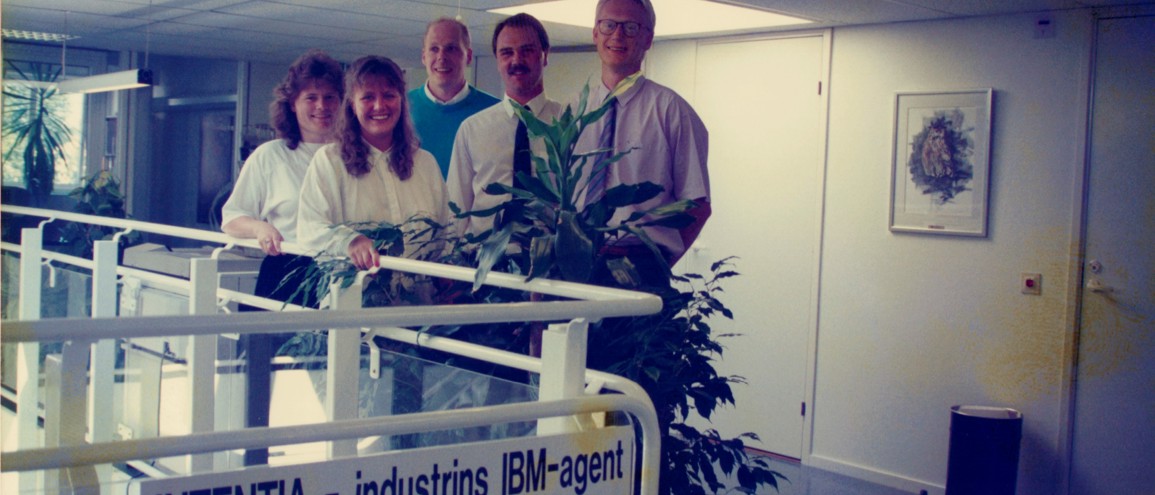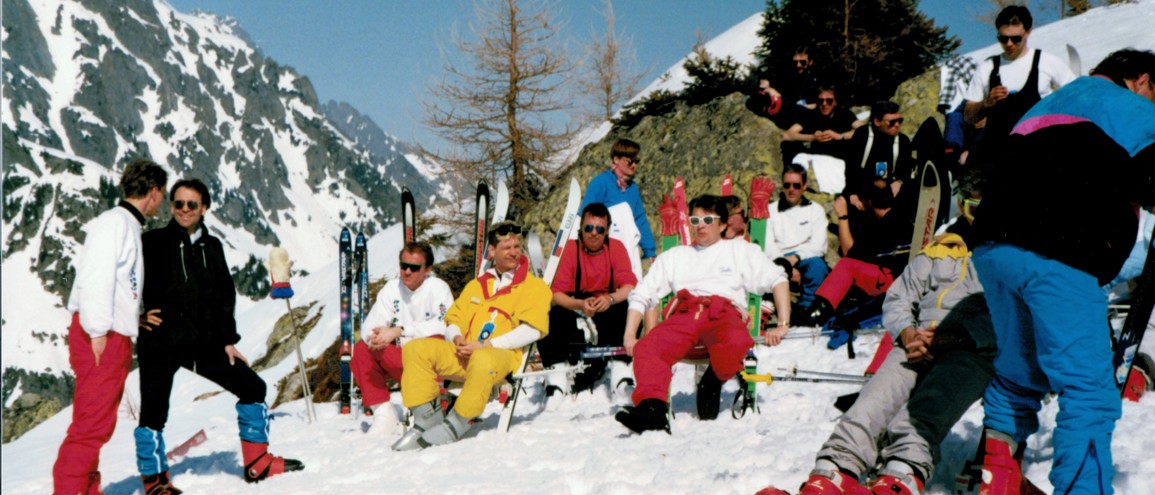Intentia: It all started in Linköping
It can't be just a coincidence that Linköping is the birthplace of several world-leading companies in software and business systems? Here, we have a conversation with the founders of the global success story Intentia about the company's journey – and how Linköping contributed to it.
“It all started in Linköping”, says Mikael Agerås. "We came from all corners of Sweden and gathered here in 1978 to study the ‘I-linjen’ - the engineering programme in industrial economics, a programme that Linköping was the first to introduce”.
“After the programme, none of us wanted to start at any of the big companies”, says Rune Groppfeldt. “It was the usual thing to do. To end up at ABB or Ericsson after a trainee programme. But that wasn't for us”.
“We were kind of revolutionaries back then”, Göran Felldin laughs.
A big partner opened the door to a market that would change the business.
“We decided to start something together”, says Mikael. “The business idea was to make money and – above all – make work fun. And computers and software were really the future then”.
“It occurred to us that all companies needed to get their logistics and accounting in order, and computers brought about a brand new way of thinking”, says Björn Algkvist. “We stepped in right in the middle of that change”.
“We knew some people who worked at IBM and heard that there was a lack of consultants for their business systems”, says Mikael. “So we became entrepreneurs, starting as IBM agents and working with their systems”.

An ambition to be the biggest in the world
Soon, a goal was set to not only be the biggest in Östergötland, but the biggest in the whole world. But Intentia did not start out with a big budget.
“We were sitting in my apartment at the time on 10 February 1983 and signed all the papers for PRV, and our girlfriends got to be the witnesses”, says Göran. It felt pretty cool”.
“At first, our salaries were exactly the same amount as our study grants”, says Mikael. “When we started generating profit, we doubled our salaries”.
“We did that a few times until it was too high a few years later”, Göran laughs.
“We drove around in rusty old cars at the beginning. You would park a good distance away when you were visiting a customer, and you would be scared that the customer would say 'shall we take your car and go for lunch?'”.
“And then when we leased nice cars, we still parked far away”, notes Mikael. “You can't look too successful”.
In-house software development and the expertise that the customers needed became the key to success.
“What we would now call digitalization was what we started then”, says Göran. “For many of our customers, the deal they closed with us was their first investment in a computer and system. It was the beginning of a brand new way of working”.
“The market was incredibly fragmented and there was a software company on every corner”, says Björn. “In the nineties, we realized that it wouldn't work to have all of these companies, and we decided to become one of the major players in the world”.
Language choice opened new doors
“We identified a gap in the market: there was no payroll system or personnel system on the IBM platform. So we started developing it ourselves. We brought in two guys from the information systems programme, Micke Grindestam and Håkan Strängbom, who would code it over a summer vacation. They are still around”, laughs Mikael.
“Our product was new, very good and was rewritten”, says Mikael. “The pace increased. You need to think big to conquer the world, and the move towards an international perspective became the next big success factor”.
“Sweden was an export country for a long time”, notes Göran. “And somehow it was in the spirit of the times to take our business outside our borders – both for us and for our customers”.
“We chose to build the ability to convert the language and currency in our software”, says Mikael. “Even IBM didn't have that ability themselves. Now we were able to sell to large Swedish groups that had subsidiaries in other countries, and everything could be integrated – even with Arabic, Chinese and Japanese characters. Perhaps we wouldn’t have come up with that solution if we weren't from a slightly smaller country”.
“We went from 100 to 4,000 employees in nine to ten years, and opened offices in around 30 countries”, says Björn. “When I look back, it's just amazing, it's impossible to grasp. And Linköping is partly to thank for that”.
Competence flowing to and from Linköping
Competence came from Linköping – and to Linköping – when Intentia's employees and partners were to be trained.
“At first, we recruited old classmates”, says Göran. “It worked very well if you consider the development of what we offered and the company”.
“For the remainder of the 90s, I think we were the biggest recruiters from Linköping University”, says Björn. “About 200 a year were hired, put in six months of intensive internal training and then we sent them out somewhere in the world. Linköping has really supplied a lot of competence for the world in this area”.
“Linköping was a pioneer in linking the university and industry and creating the right conditions”, says Mikael. “A good idea that paid off. There have been many offshoots from research, and a large number of other startups”.
“Linköping also became the training hub for our product, and people from all over the world came here to stay up to date. Linköping became a brand that lives on to this day in those contexts, and for many people, it is the only place they have visited in Sweden”.
Intentia was sold to Lawson Software in 2006, which in turn was bought by Infor Global Solutions.
“None of us are active in the company, but in private, many of us who were involved from the beginning have stuck together since our days as students, and continue to do so even today”, says Göran.

“When we had our fortieth anniversary in January 2023 and started looking at all the old photos from back then, we really saw how much the families – everyone's partners and children – were also part of the company. Many of us were the same age, we started parent cooperatives together, had Knut’s parties, go-kart races and a lot of other things. Like a community within a community”.
“We used a purple pyramid in our logo – something that we also built into the facade on, for example, Ottargatan where we had offices for a while. The customers thought it was sharp in the 90s”, Göran laughs. “And on the anniversary, we lit up Tropikhuset's glass pyramid in purple and had a party there. Now a lot of people are already talking about the 45th anniversary...”
